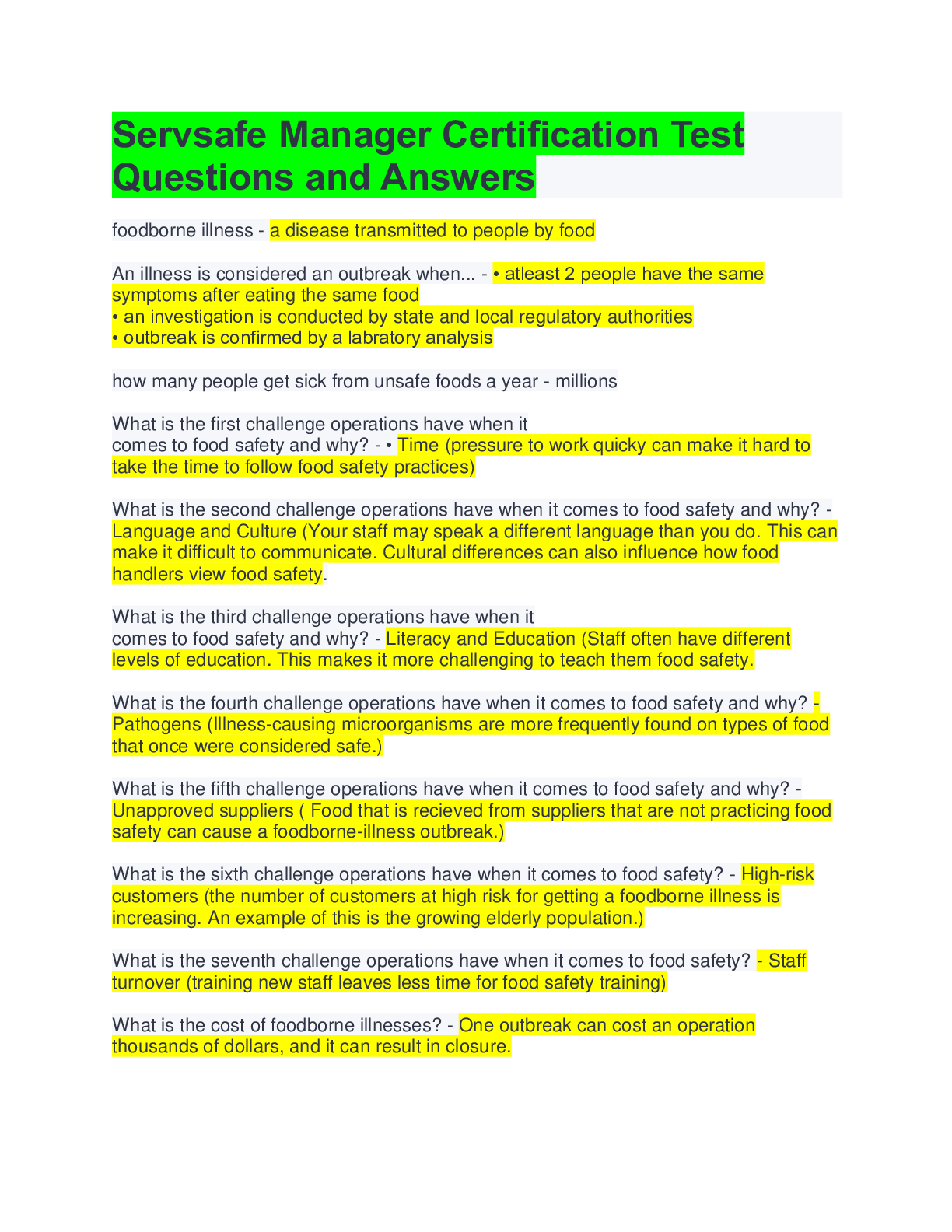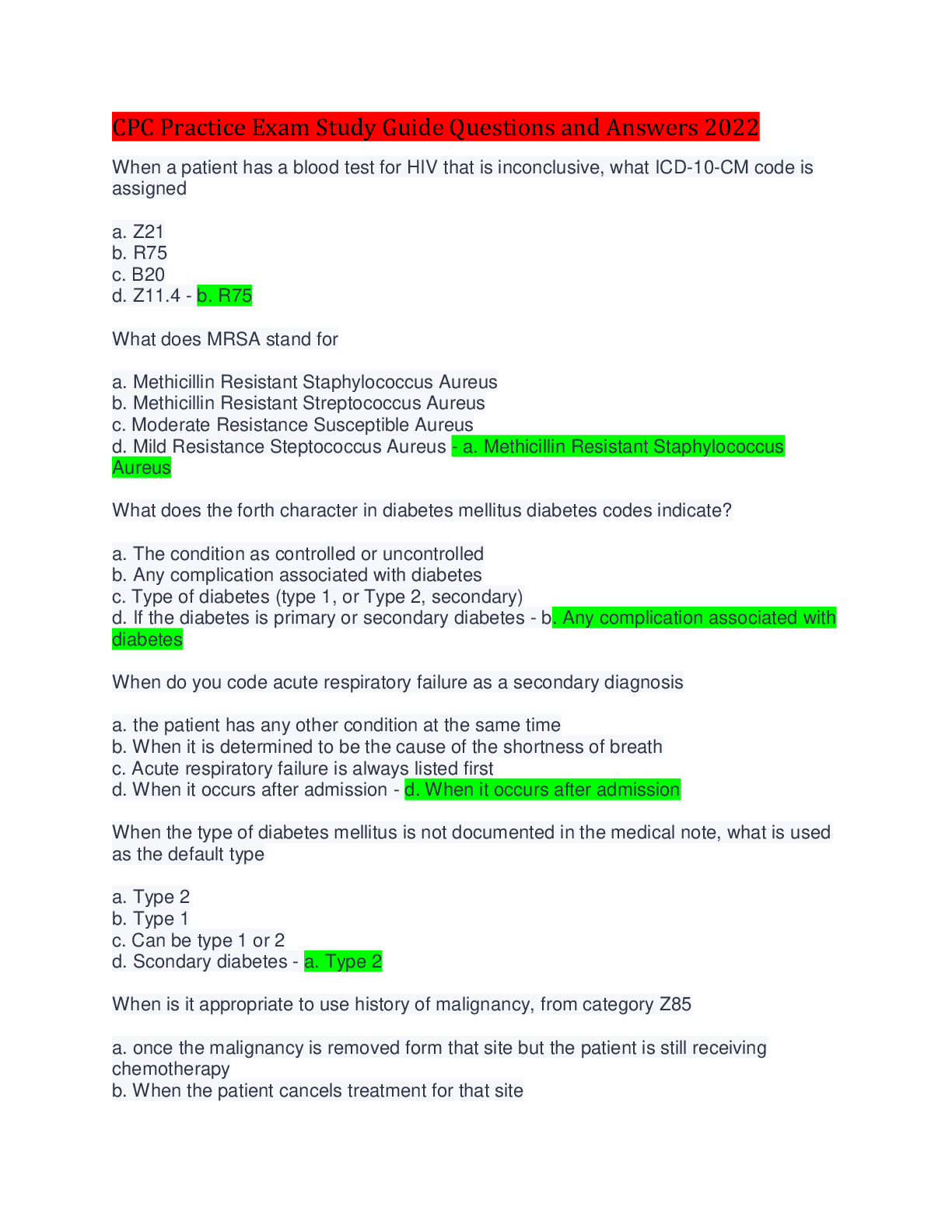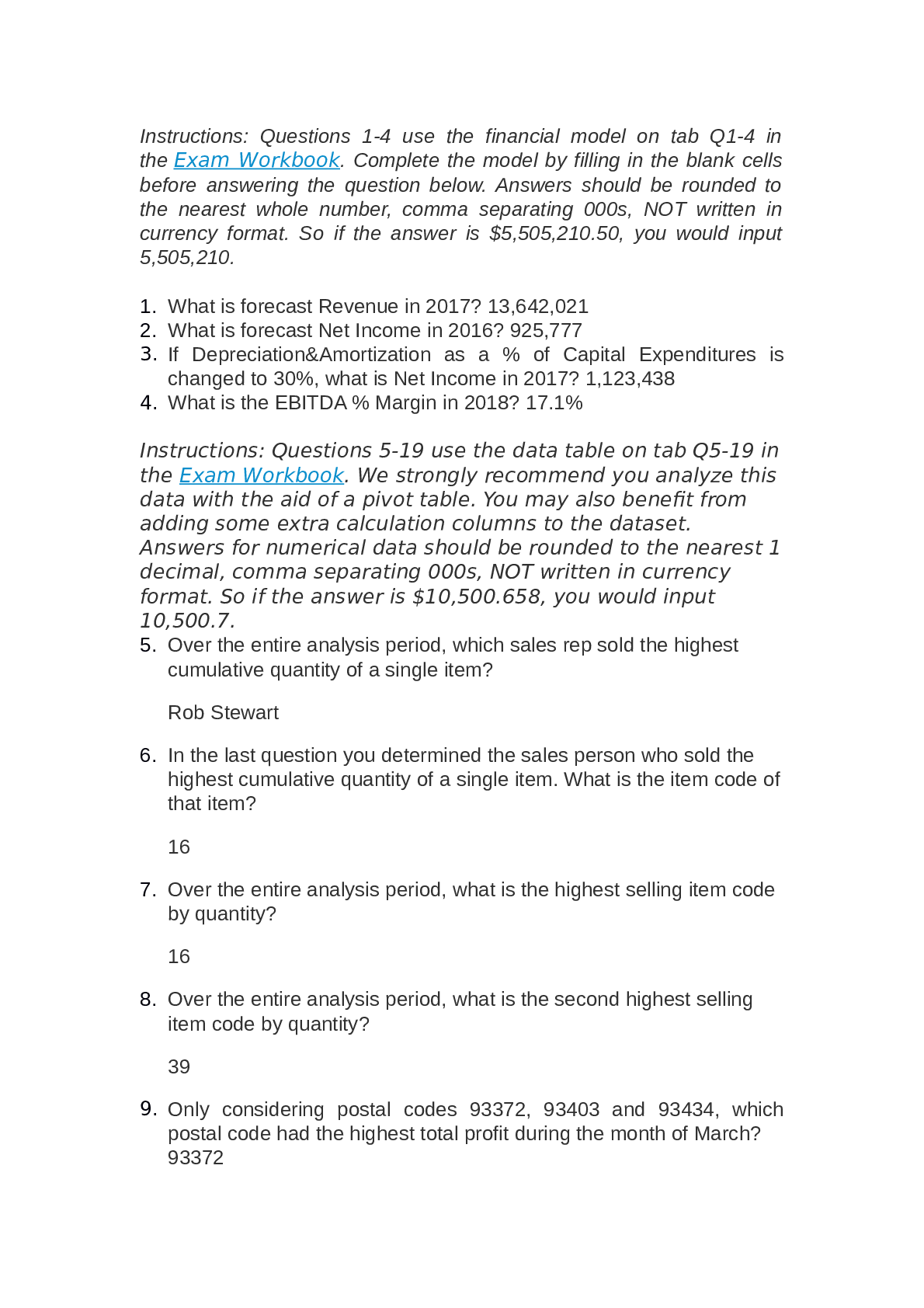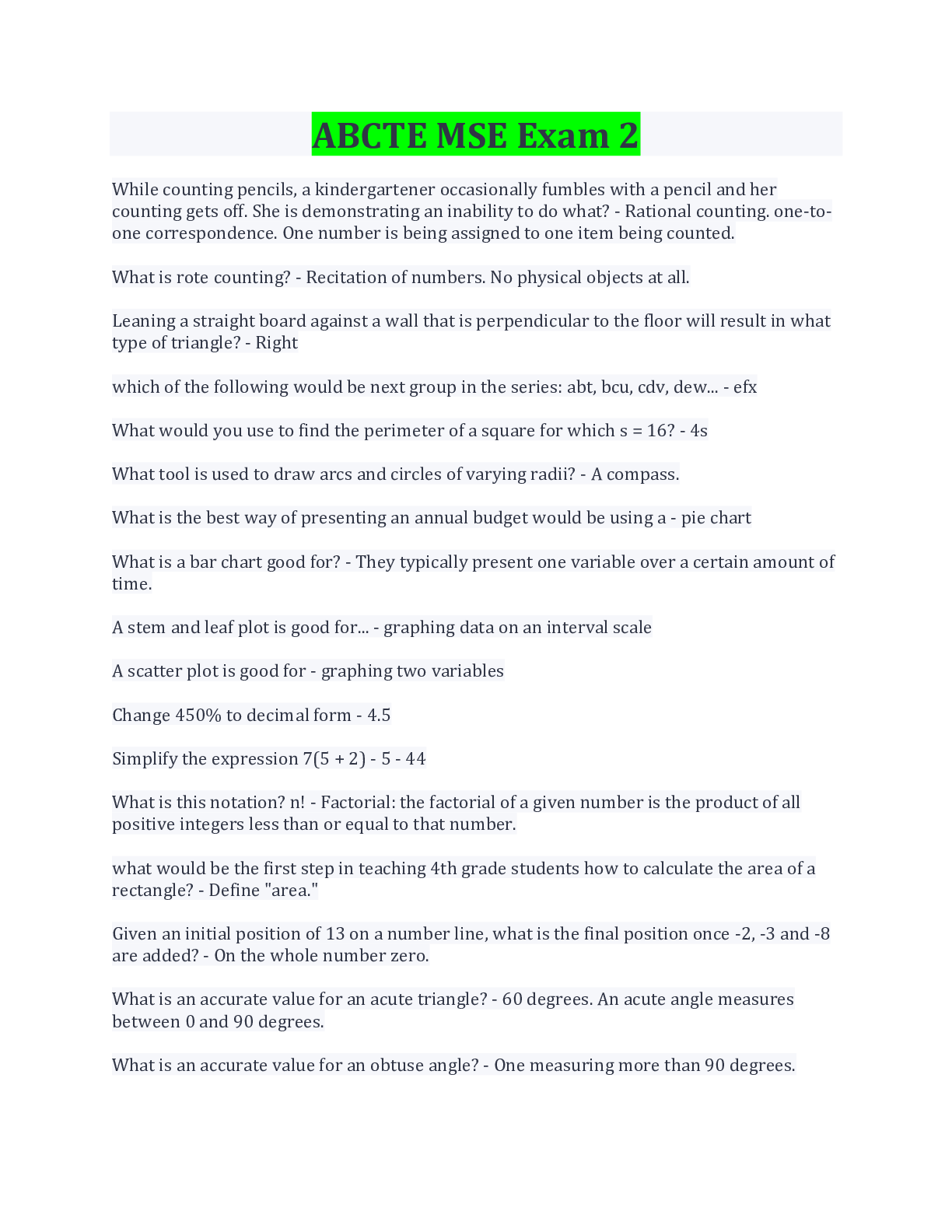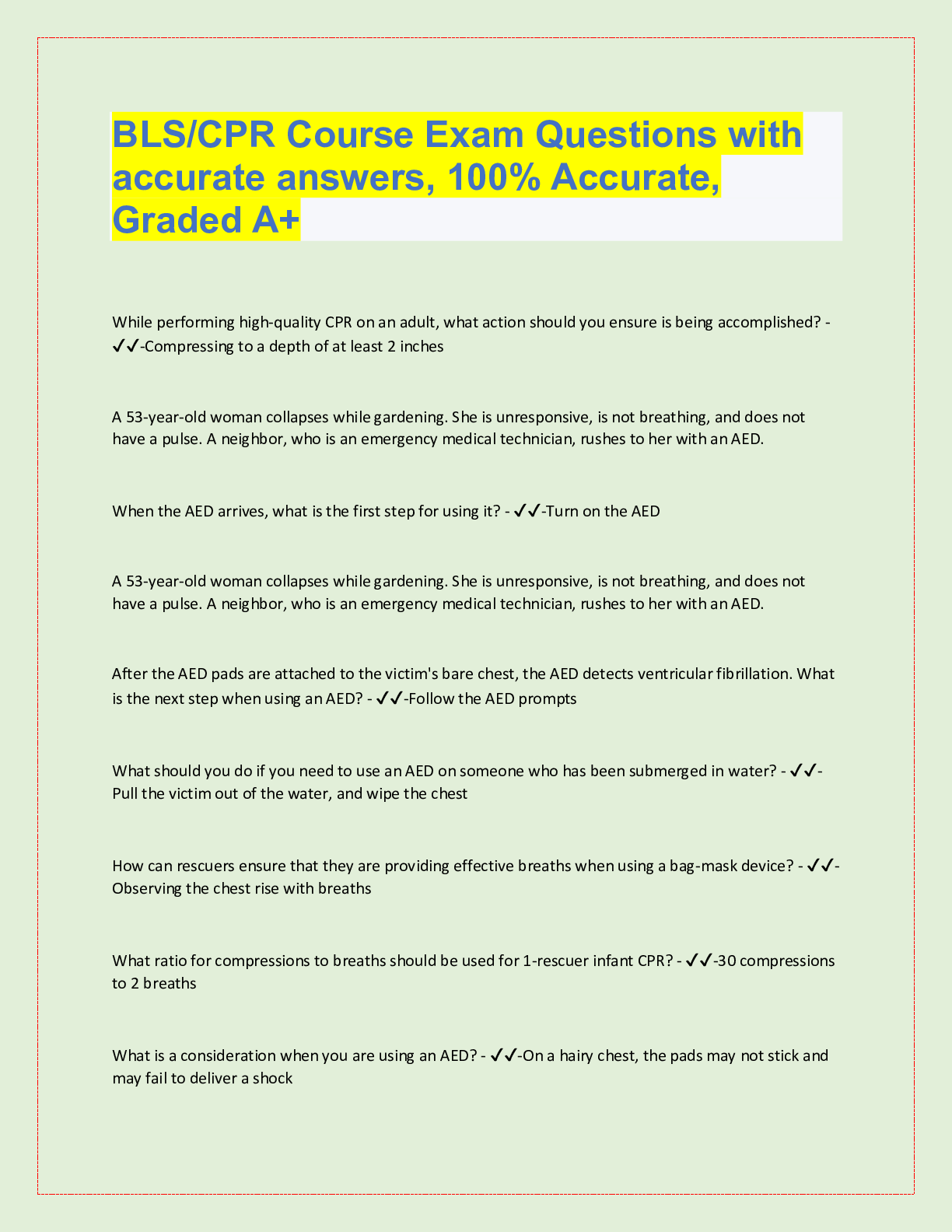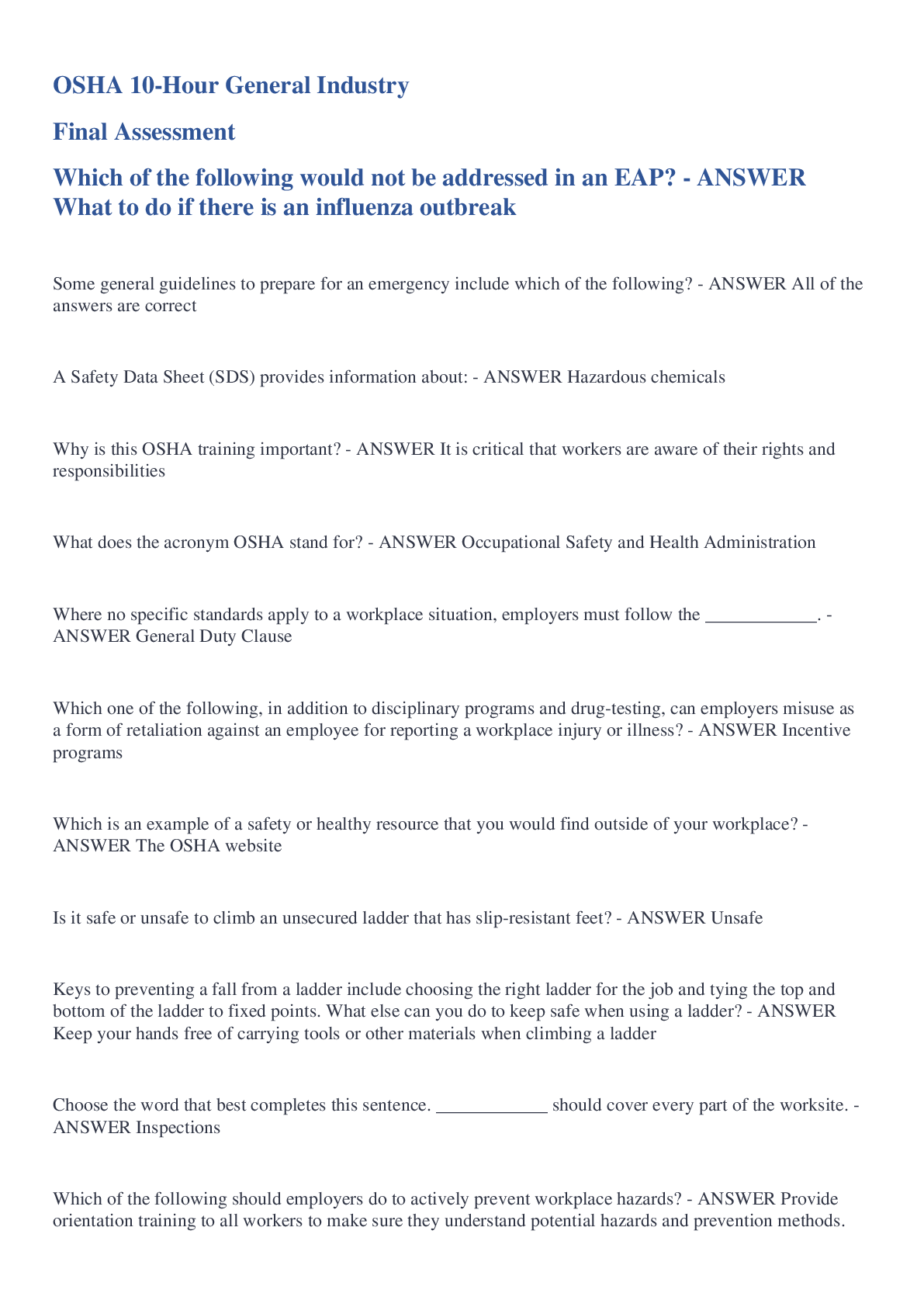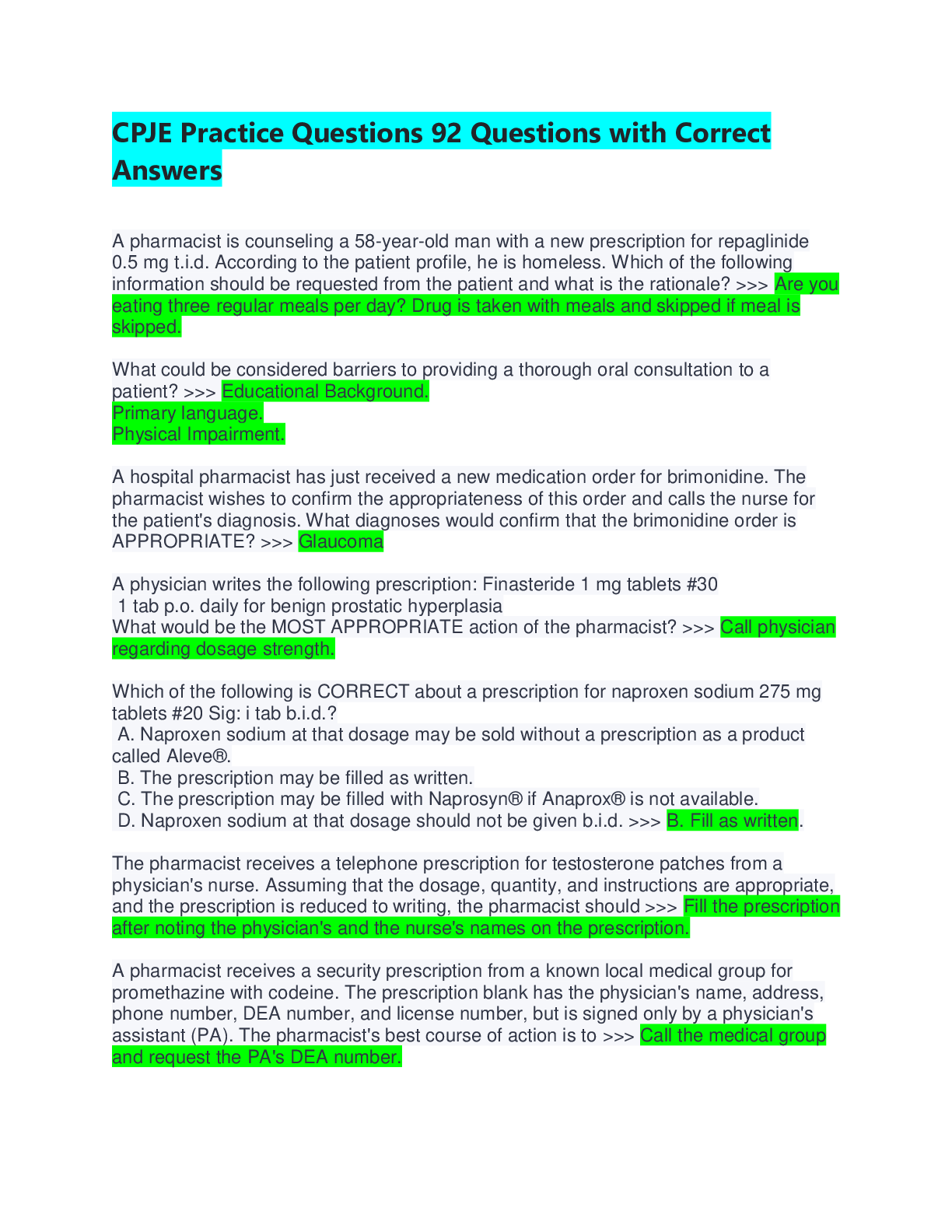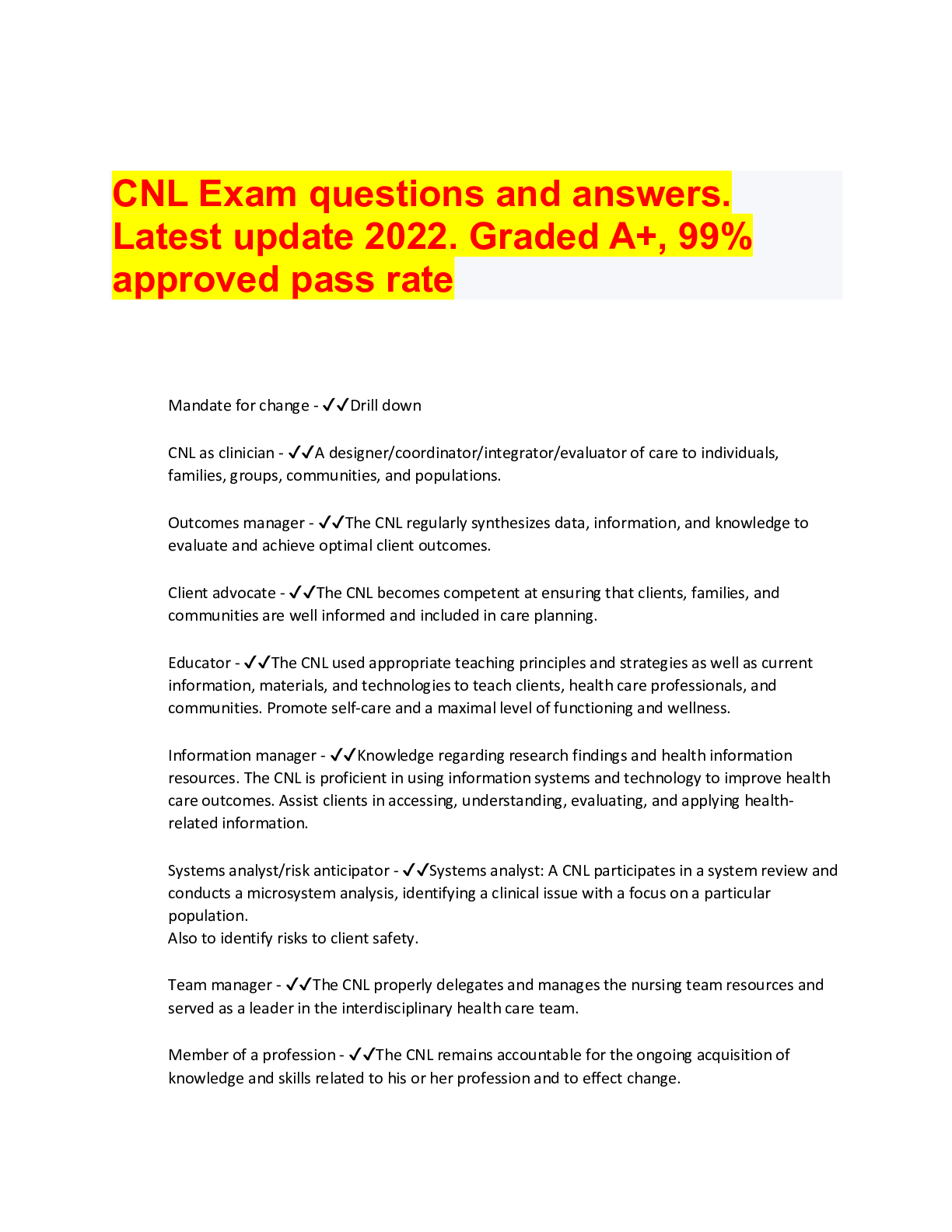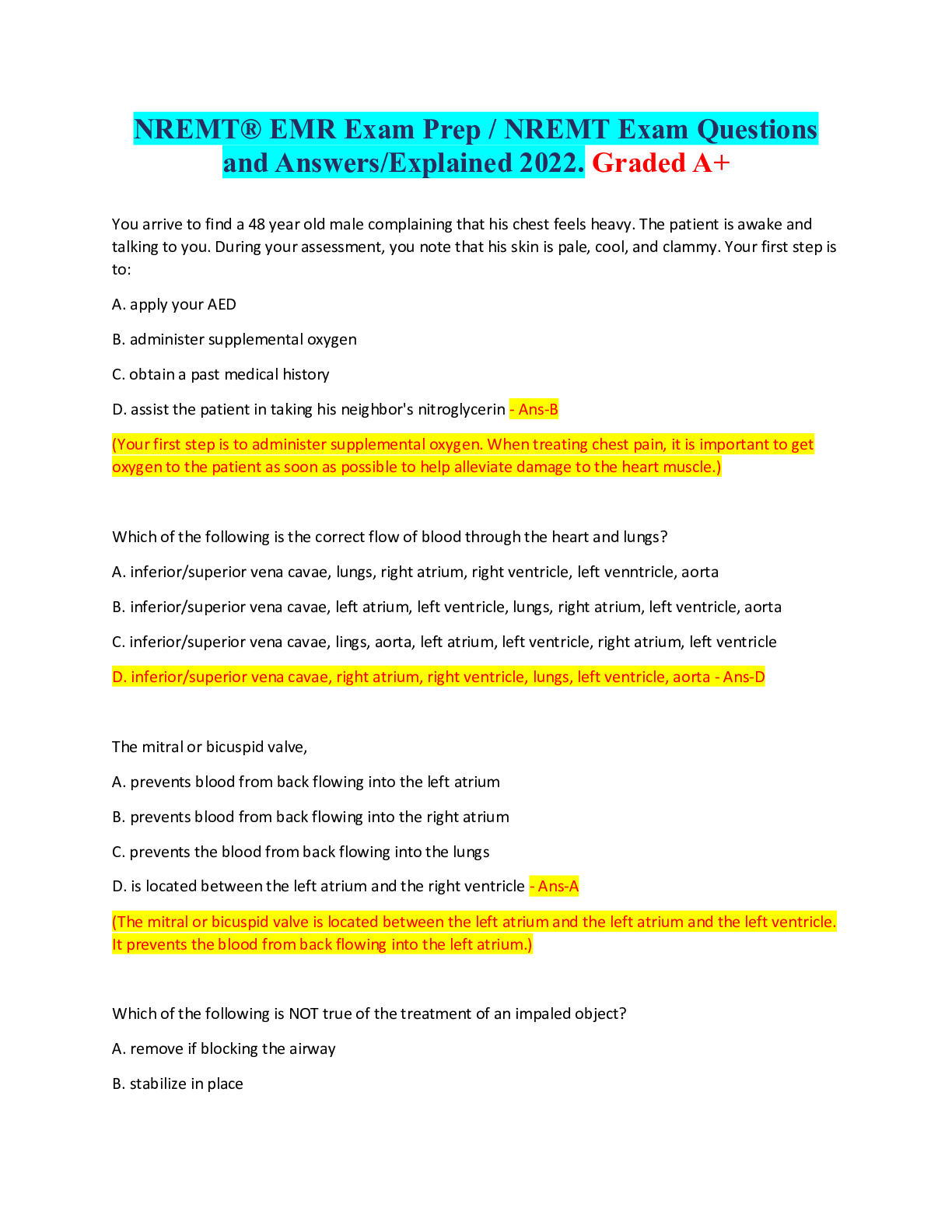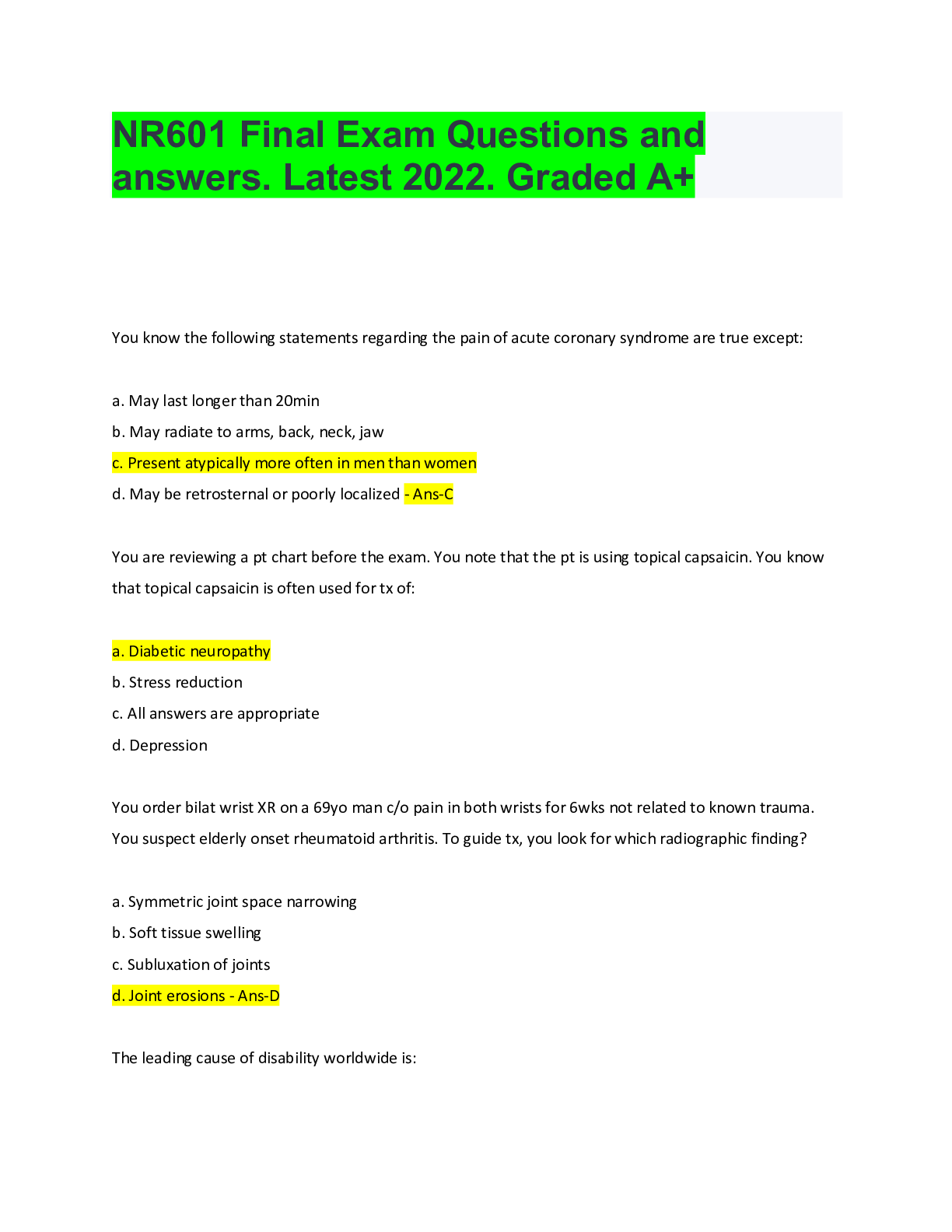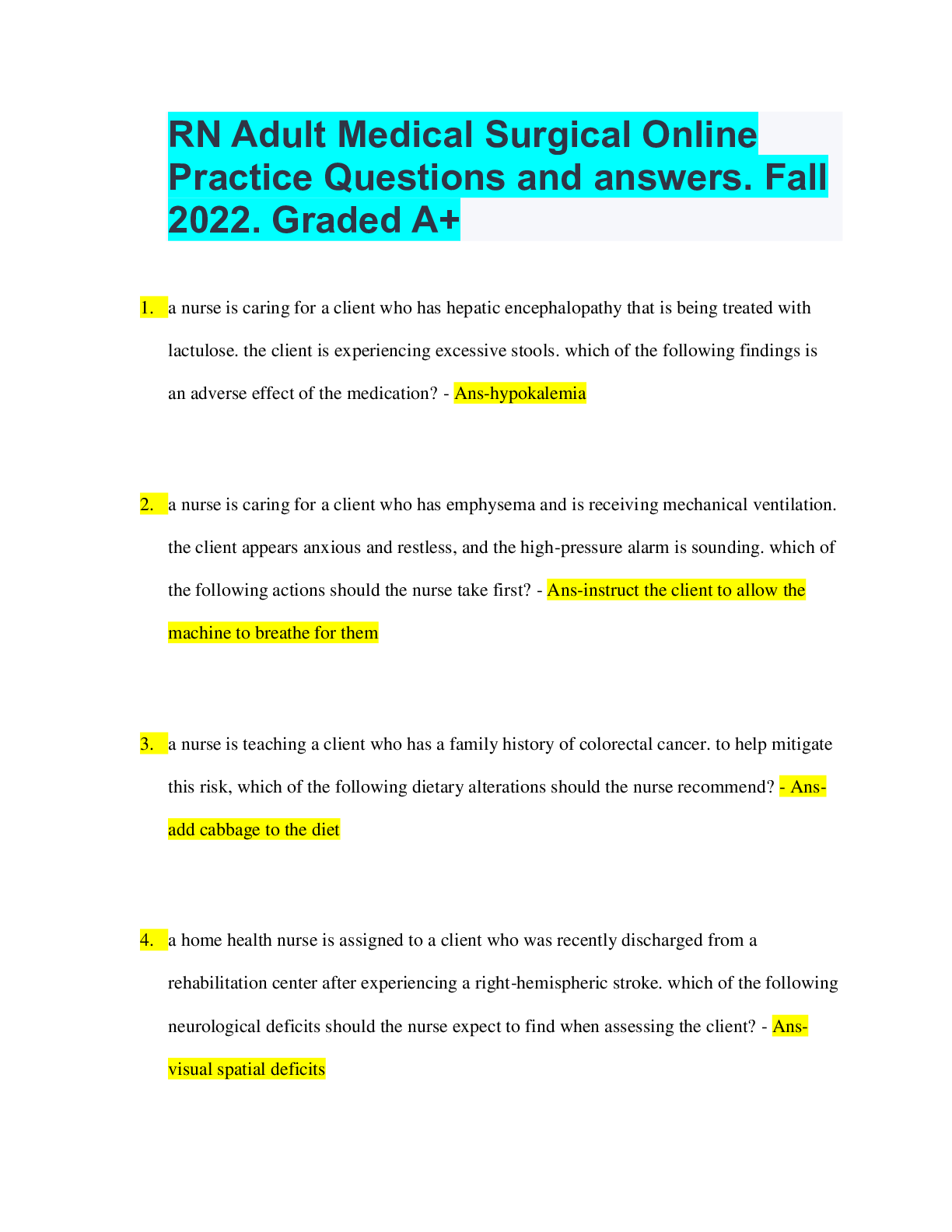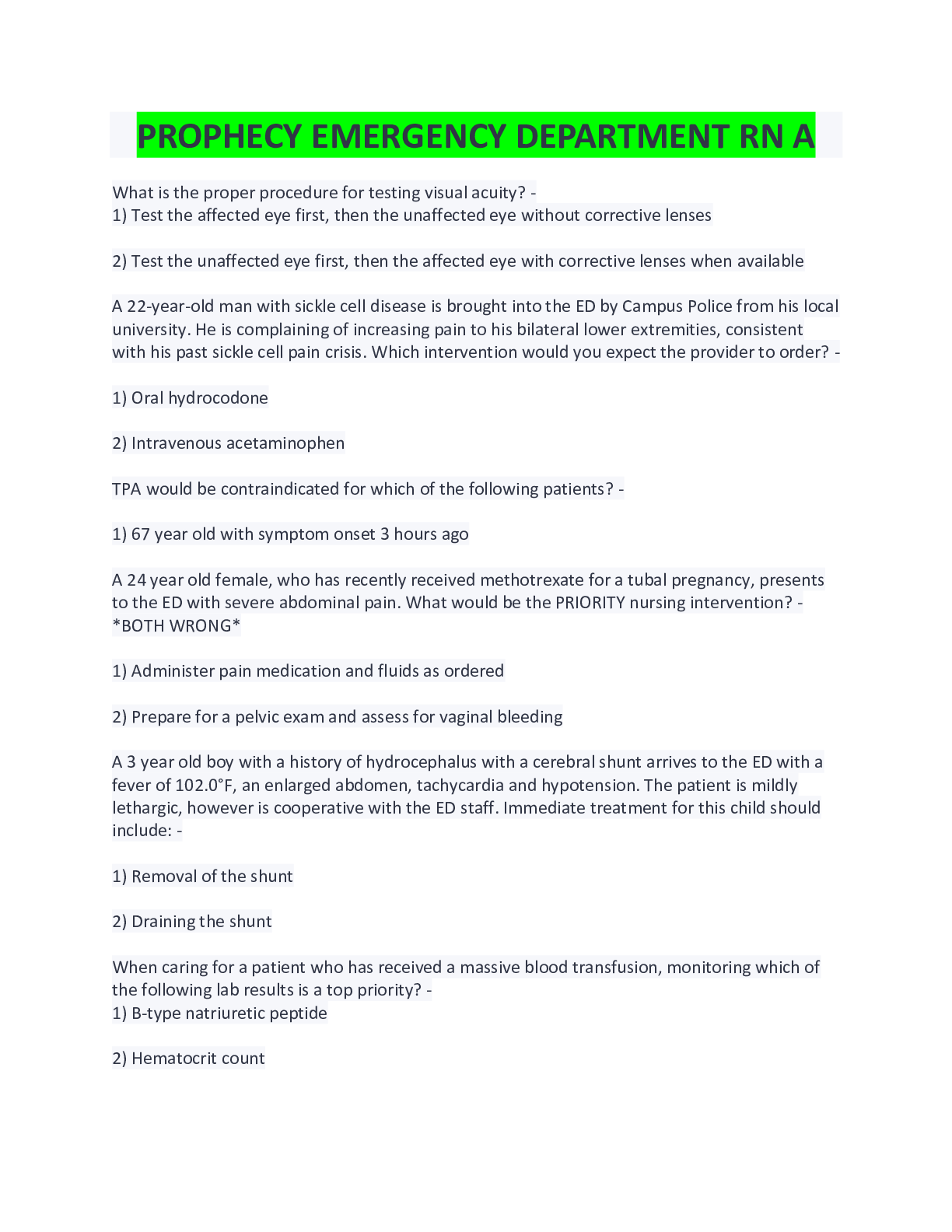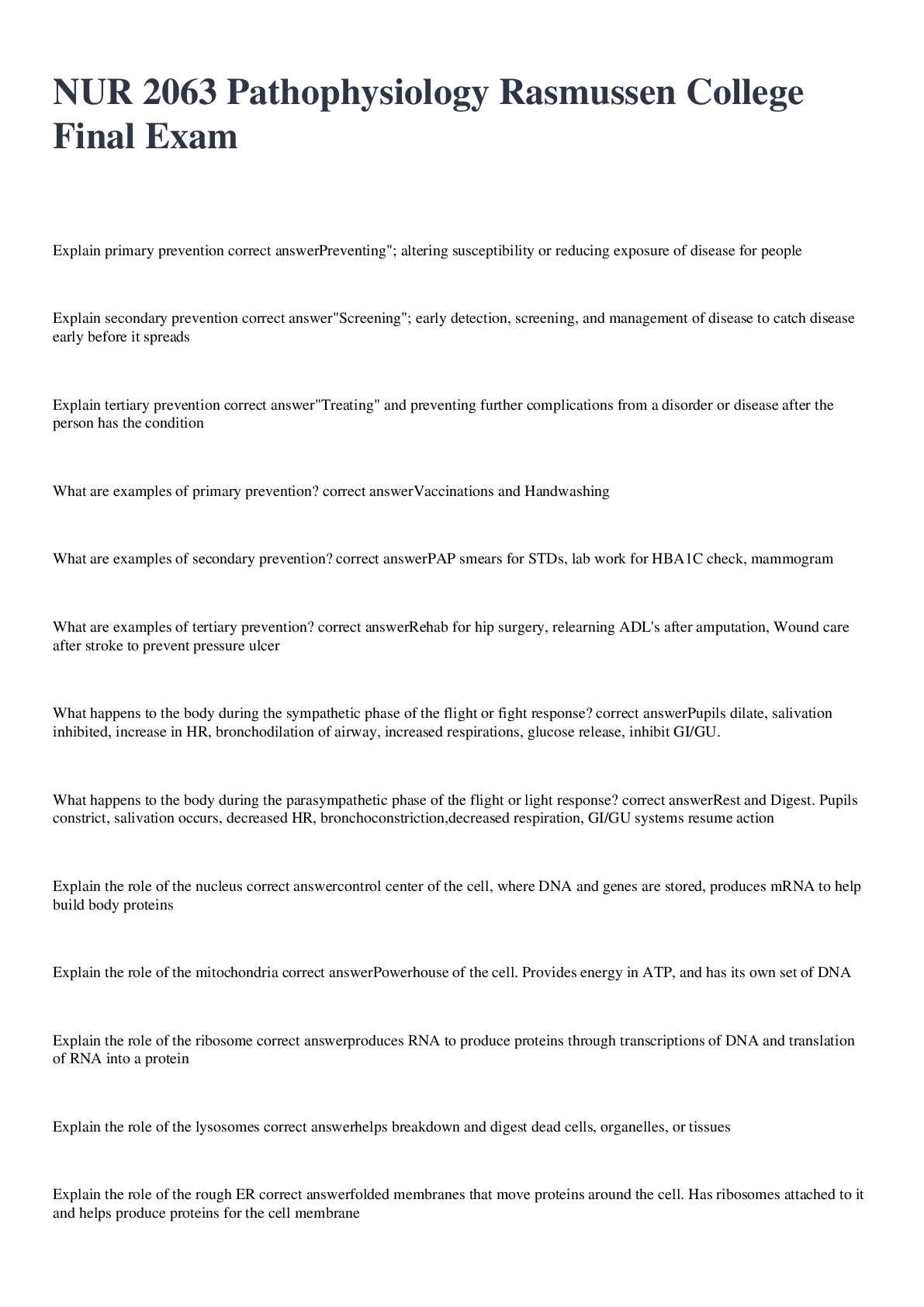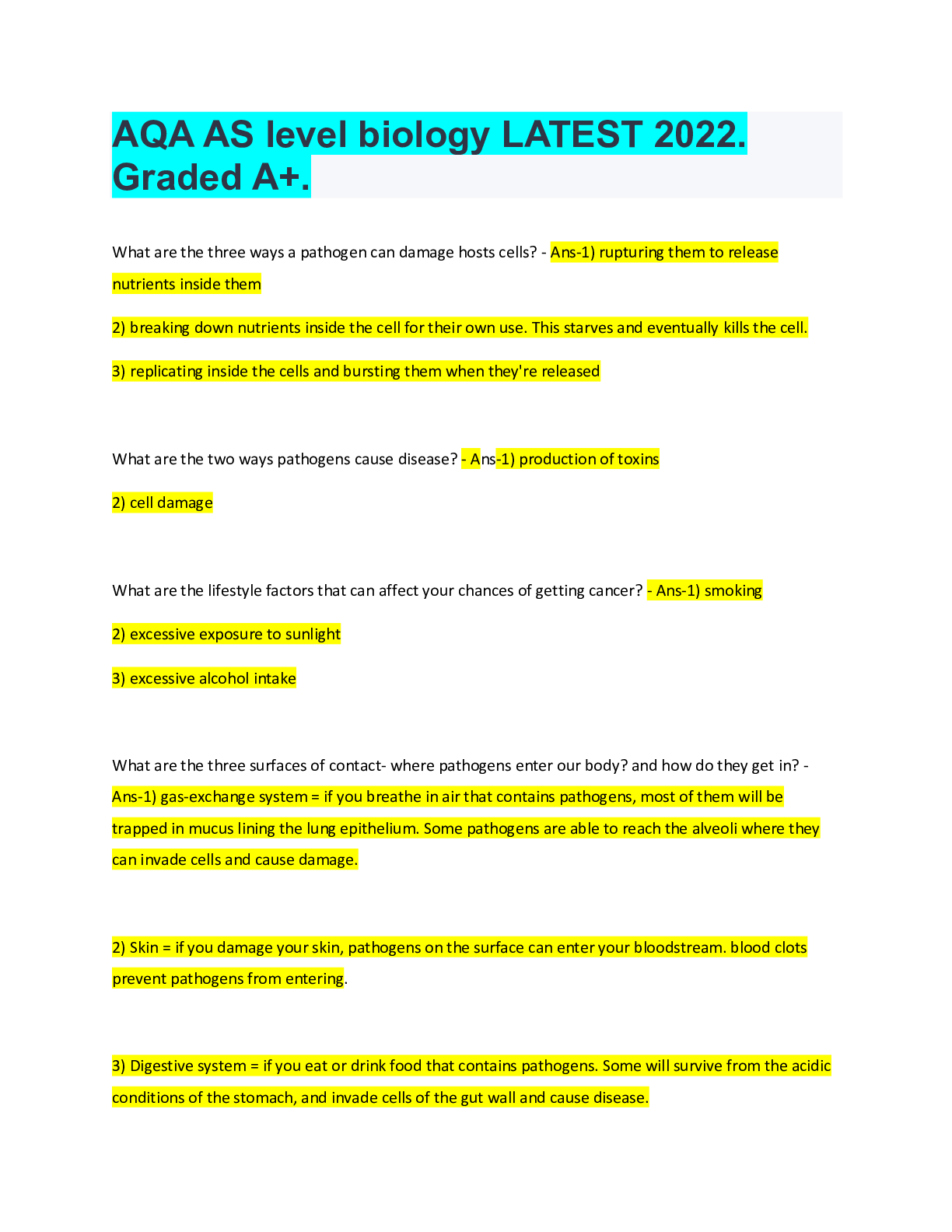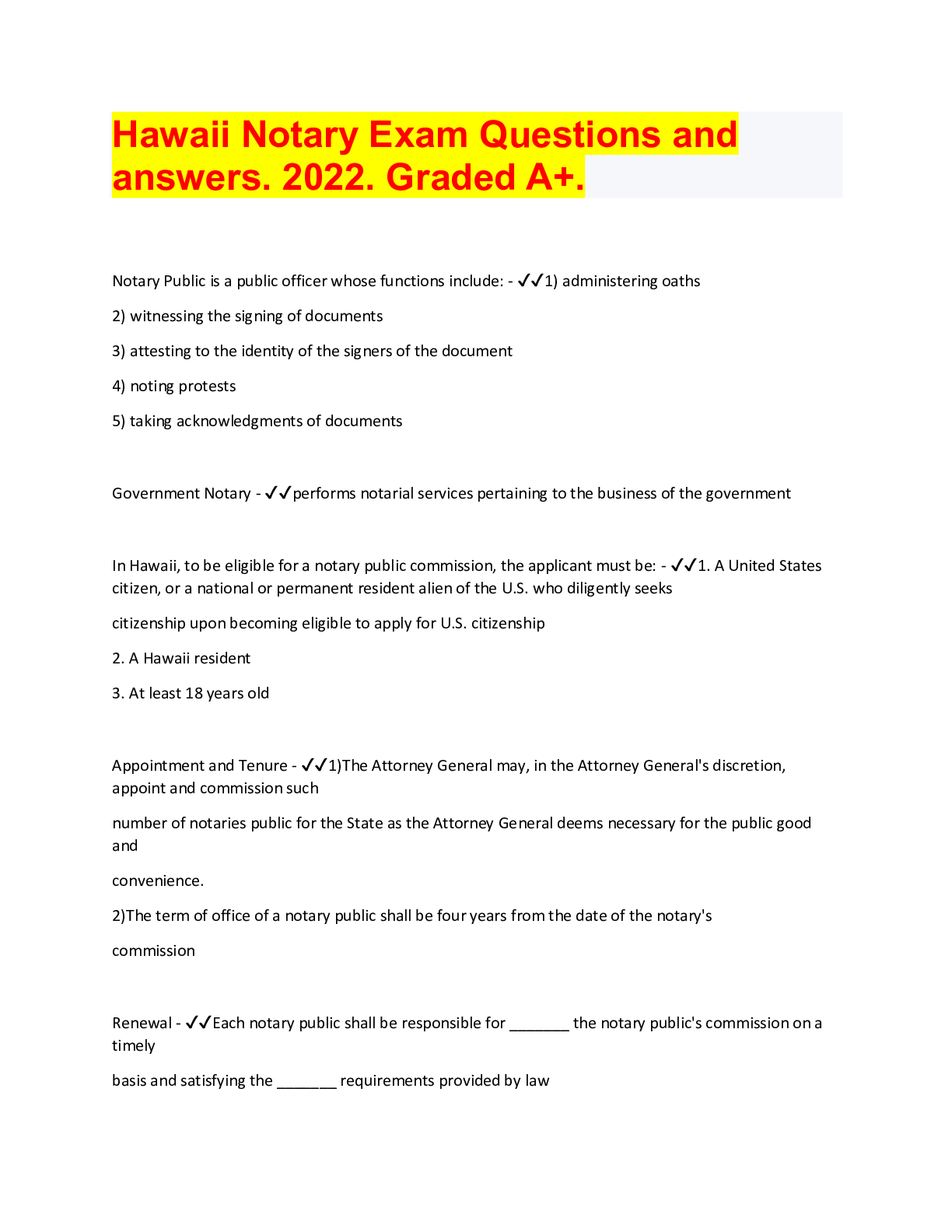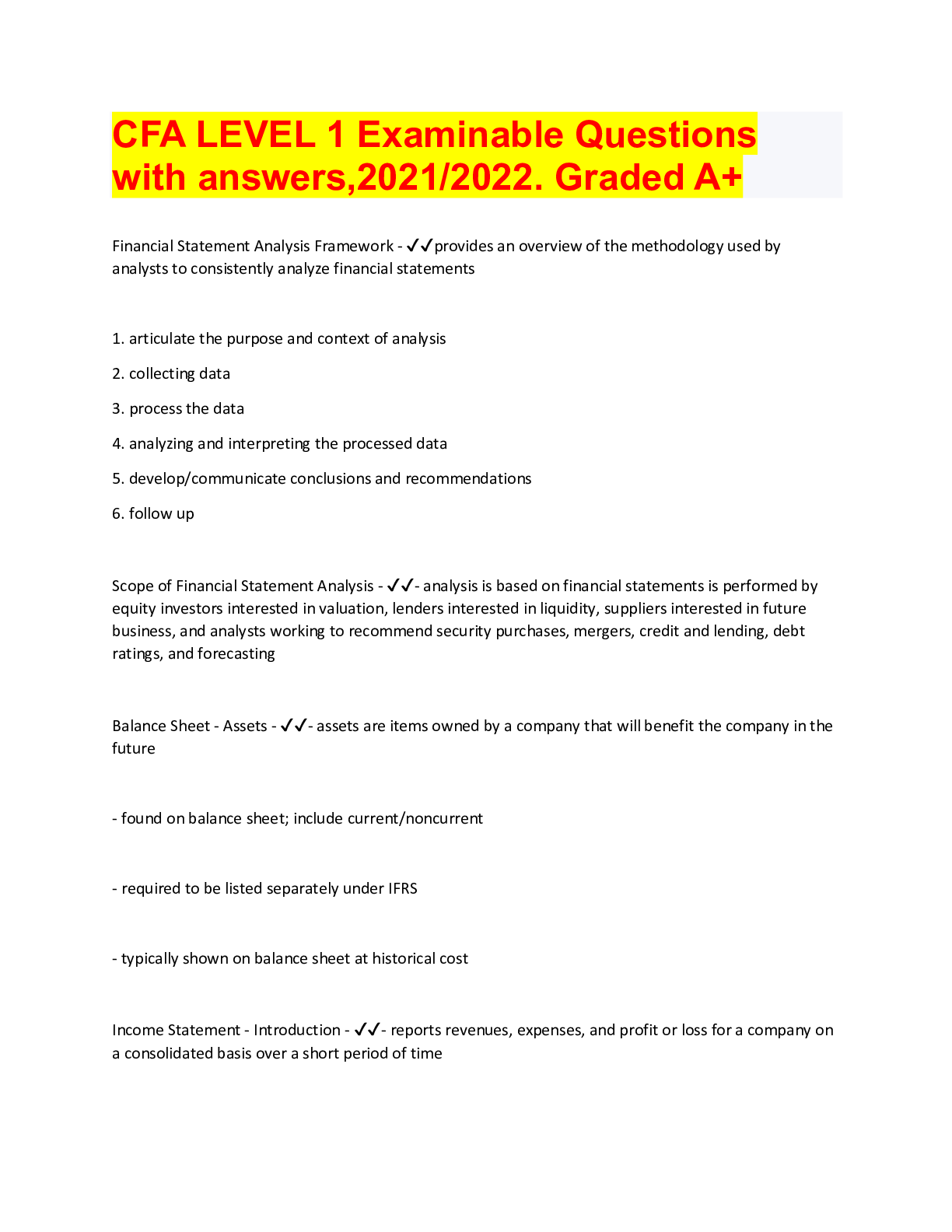*NURSING > QUESTIONS & ANSWERS > NUR 2063 Pathophysiology Rasmussen College Final Exam. Summer 2022. Graded A+ (All)
NUR 2063 Pathophysiology Rasmussen College Final Exam. Summer 2022. Graded A+
Document Content and Description Below
NUR 2063 Pathophysiology Rasmussen College Final Exam. Summer 2022. Graded A+ Explain primary prevention - Ans-Preventing"; altering susceptibility or reducing exposure of disease for people Expl... ain secondary prevention - Ans-"Screening"; early detection, screening, and management of disease to catch disease early before it spreads Explain tertiary prevention - Ans-"Treating" and preventing further complications from a disorder or disease after the person has the condition What are examples of primary prevention? - Ans-Vaccinations and Handwashing What are examples of secondary prevention? - Ans-PAP smears for STDs, lab work for HBA1C check, mammogram What are examples of tertiary prevention? - Ans-Rehab for hip surgery, relearning ADL's after amputation, Wound care after stroke to prevent pressure ulcer What happens to the body during the sympathetic phase of the flight or fight response? - Ans-Pupils dilate, salivation inhibited, increase in HR, bronchodilation of airway, increased respirations, glucose release, inhibit GI/GU. What happens to the body during the parasympathetic phase of the flight or light response? - Ans-Rest and Digest. Pupils constrict, salivation occurs, decreased HR, bronchoconstriction,decreased respiration, GI/GU systems resume actionExplain the role of the nucleus - Ans-control center of the cell, where DNA and genes are stored, produces mRNA to help build body proteins Explain the role of the mitochondria - Ans-Powerhouse of the cell. Provides energy in ATP, and has its own set of DNA Explain the role of the ribosome - Ans-produces RNA to produce proteins through transcriptions of DNA and translation of RNA into a protein Explain the role of the lysosomes - Ans-helps breakdown and digest dead cells, organelles, or tissues Explain the role of the rough ER - Ans-folded membranes that move proteins around the cell. Has ribosomes attached to it and helps produce proteins for the cell membrane Explain the role of the smooth ER - Ans-helps the Liver and kidney cells to detoxify, lipid metabolism, synthesis of hormones, and calcium storage Explain the role of the peroxisome - Ans-membrane cells that contain oxidase and catalase to detoxify harmful chemicals, breakdown hydrogen peroxide and filter metabolic wastes Explain the role of the Golgi body - Ans-stacked membranes that act as the sorter and packager for proteins from the ER. Helps move things in and out of cell Explain passive immunity - Ans-the transfer of preformed antibodies against specific antigens from a protected or immunized individual to an unprotected or non immunized person. Provides immediate and short term protection. No memory cells are produced. IgA and IgE. Passes protection What are examples of passive immunity? - Ans-mom to fetus through placenta or mom to infant through breast milk. SerotherapyExplain active immunity - Ans-a protective state owing to the immune system response as a result of active infection or immunization. It has to be activated in the body and the body has to fight it to have long term immunity What are examples of active immunity? - Ans-Vaccinations Explain what edema is - Ans-accumulation of fluid in the interstitial space. Leads to tissue swelling What are some causes of edema? - Ans-increase in the forces that move fluid from capillaries to interstitial compartments or decrease in the opposite. What are factors that contribute to edema? - Ans-Increase in hydrostatic forces in the capillaries that increases the blood volume, increased capillary permeability, CHF, HYPTN, decrease in plasma proteins like albumin (causes liver to hold onto more water- ascites, cirrhosis), blockage of lymph drainage What is a hypersensitivity? - Ans-an overreaction to antigens or allergens that is beyond the normal range, leading to damage What is a type 1 hypersensitivity? - Ans-anaphylactic. Occurs within 2-30mins of exposure. Can be systemic or localized. Binds to IgE and mast cells that release histamine, leukotrienes, and prostaglandins to create inflammation Mediating Factor for type 1 hypersensitivity - Ans-IgE Examples of type 1 hypersensitivity - Ans-allergic reaction to dust. someone eats peanuts and breaks out in hives and runny nose How do we treat type 1 hypersensitivity reactions? - Ans-antihistamines to block histamine, beta adrenergics to bronchodilator , corticosteroids, to decrease inflammation. IgE therapy, epinephrine given during anaphylaxis through IV or through IM in epipens [Show More]
Last updated: 1 year ago
Preview 1 out of 17 pages
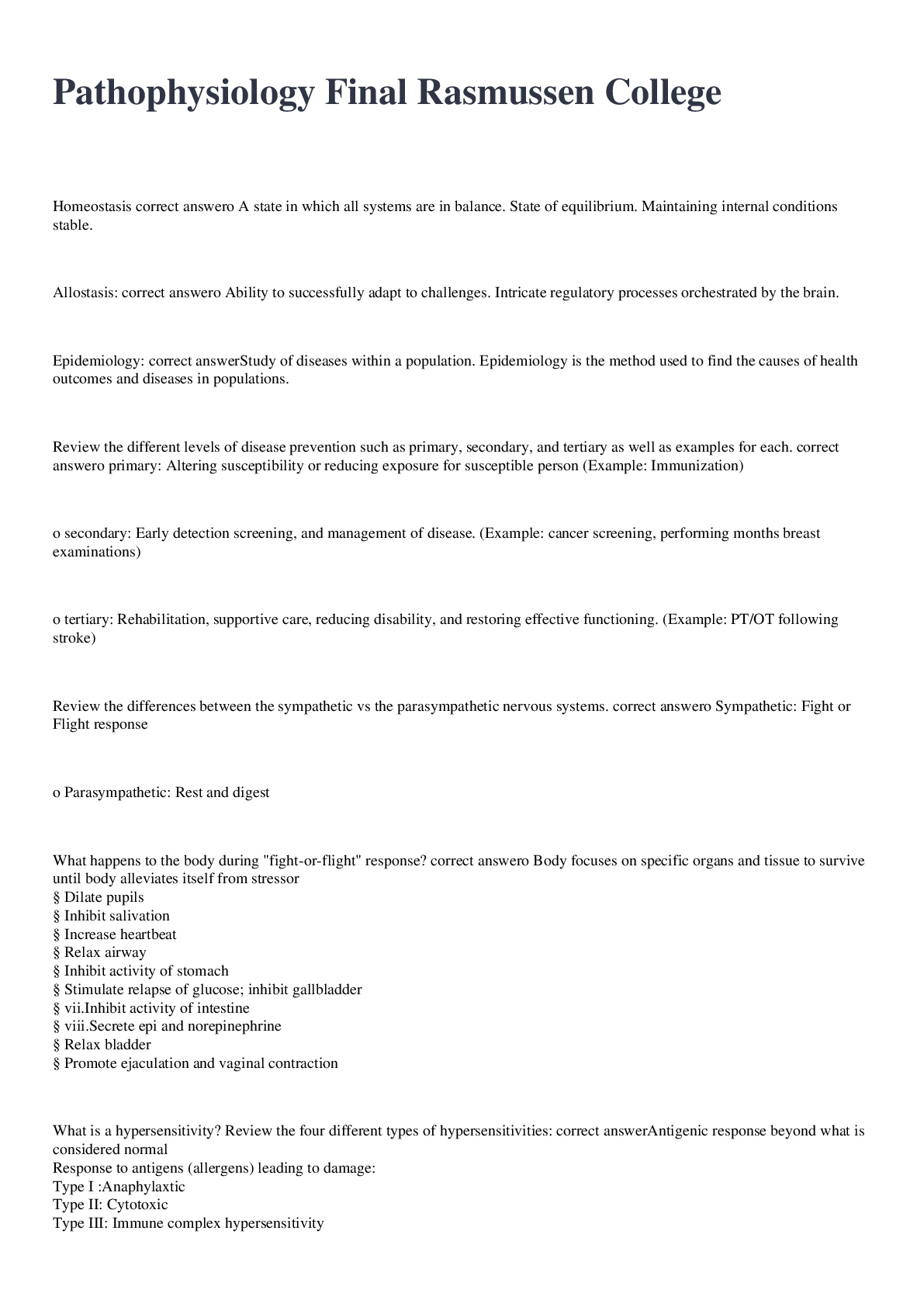
Reviews( 1 )

by taylorp · 1 year ago
Document information
Connected school, study & course
About the document
Uploaded On
Jun 29, 2022
Number of pages
17
Written in
Additional information
This document has been written for:
Uploaded
Jun 29, 2022
Downloads
8
Views
294




